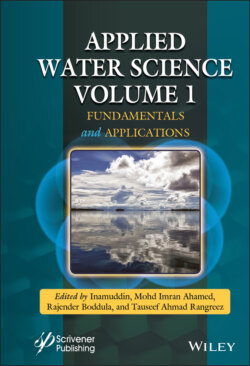Читать книгу Applied Water Science - Группа авторов - Страница 15
1.3 Stir Bar Sorptive Extraction
ОглавлениеAs a technique derived directly from SPME, SBSE is based on the same principles of distribution of the analytes between the sorbent and the sample. This technique, introduced by Baltussen et al. [63], is based on the use of a small device consisting of a magnetic bar which is introduced in a glass tube coated by PDMS in most cases, generally using around 50–300 times larger PDMS amounts as coating, so SBSE significantly increases the enrichment factors compared to SPME, providing at the same time a higher extraction efficiency as a consequence of its larger volume and surface area. Moreover, SBSE desorption can be directly developed in a thermal desorption unit in many GC systems, so it maintains one of the main advantages derived from the use of SPME [64]. Since then, this technique has evolved and a wide variety of laboratory made coatings have been developed in order to extend the field of application of SBSE, especially to the extraction of polar compounds, as well as to improve its selectivity [64]. Up to now, few works have used SBSE for the determination of PAEs in water samples (see Table 1.1). This is the case of the work of Prieto et al. [65], who analyzed six PAEs together with sixteen polycyclic aromatic hydrocarbons (PAHs), twelve polychlorinated biphenyls (PCBs) and three nonylphenols in sea and estuarine waters, and that of Si et al. [66], who extracted fifteen PAEs from sea water. In both works, commercial PDMS-coated stir bars of 0.5- and 1-mm thickness were used, respectively. In both cases, the addition of methanol (MeOH) to the water sample (20% for 0.5-mm thickness fibers and 10% for 1-mm thickness fibers, v/v) was crucial to avoid PAEs adsorption on the glass walls and to improve the extraction efficiency, particularly for long chain PAEs. In the last work, four commercially available stir bars containing different amounts of PDMS were evaluated in terms of extraction capacity. The results showed that the stir bar containing the highest amount (150 μL vs. 50, 75, and 150 μL over carbon) provided the largest peak areas, which was consistent with the principles of the process. However, the sensitivity for the higher-molecular weight PAEs (i.e., DNOP and DEHP) was notably lower, which is probably caused by the fact that this kind of nonpolar compounds establish strong interactions with the PDMS coating which could result in an incomplete desorption and the consequent higher LODs and LOQs. The combination of SBSE with GC-MS systems using single quadrupoles operated in the SIM mode allowed obtaining high extraction efficiency as well as high sensitivity (0.1–489 ng/L) in general.
